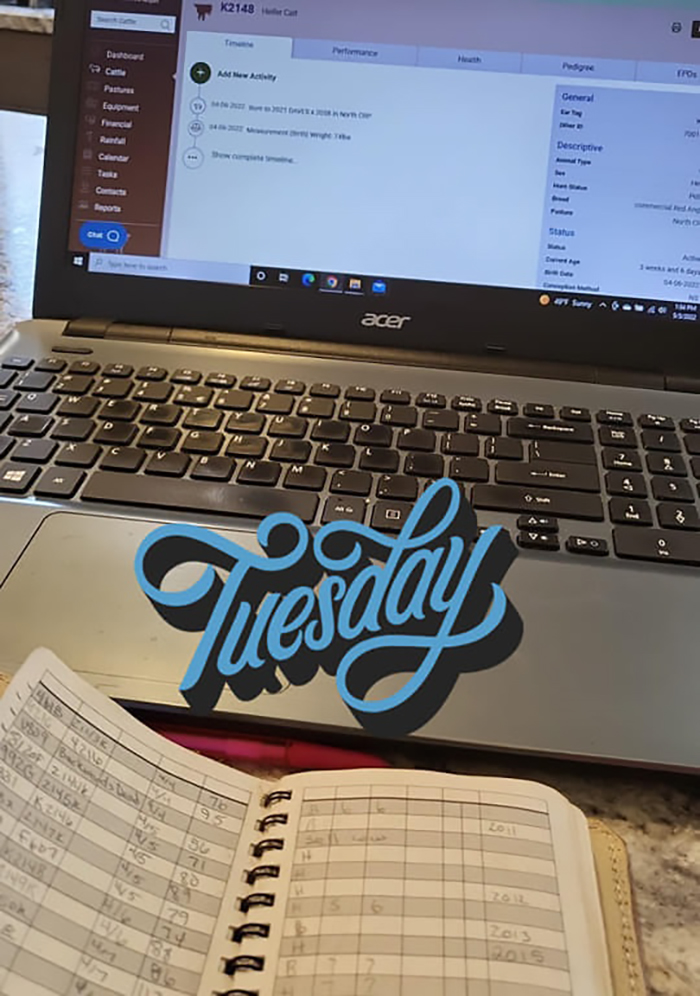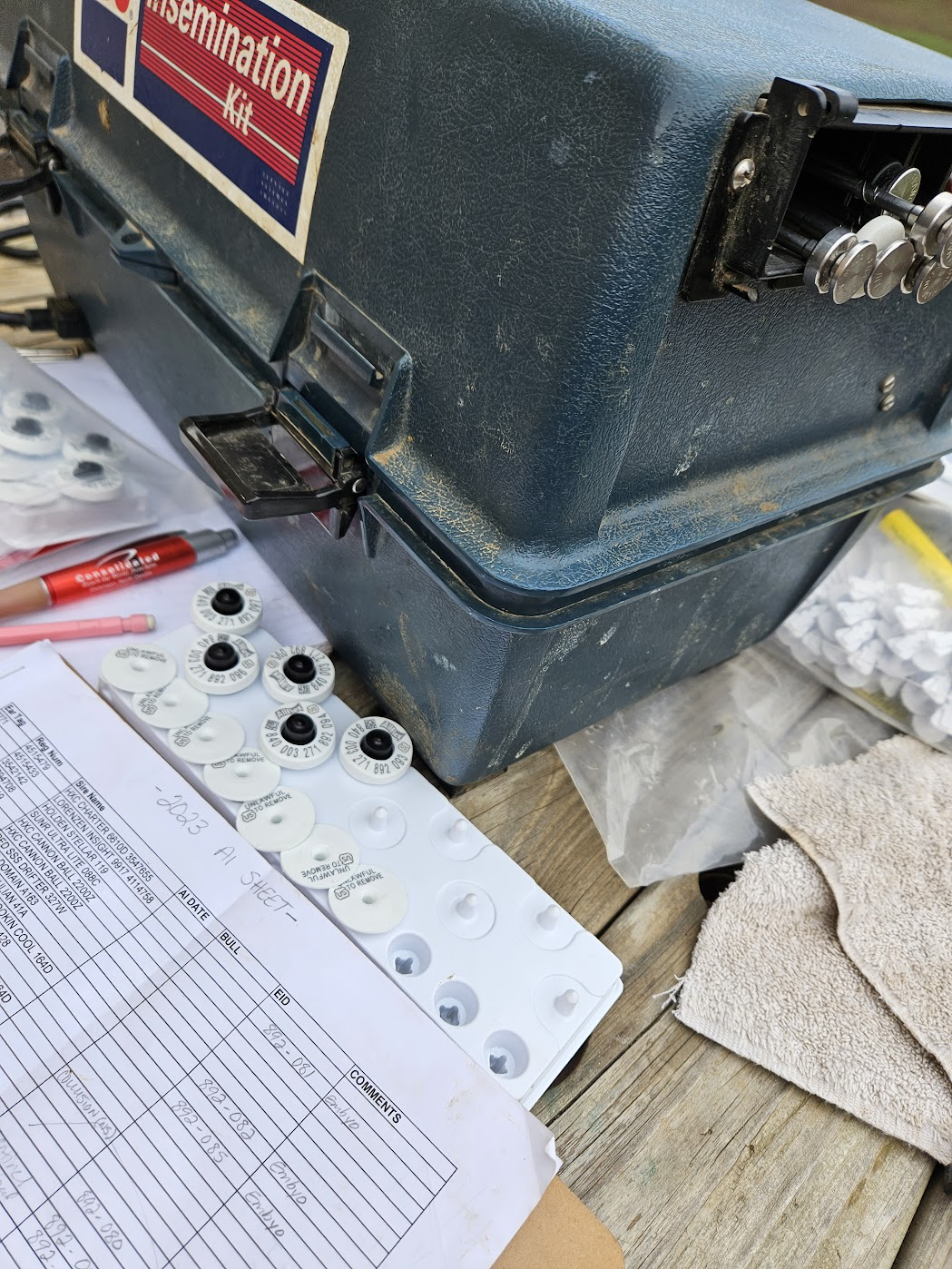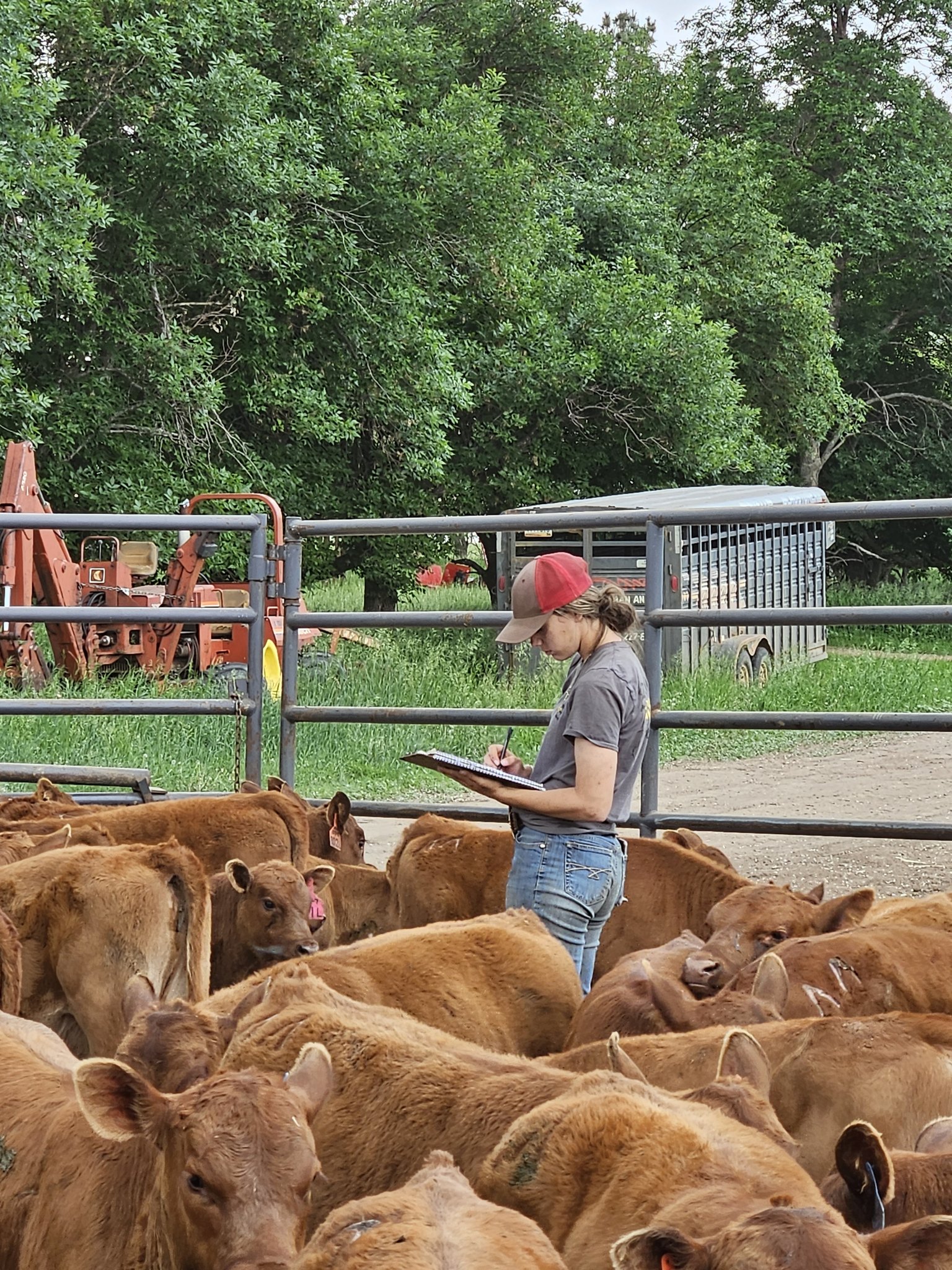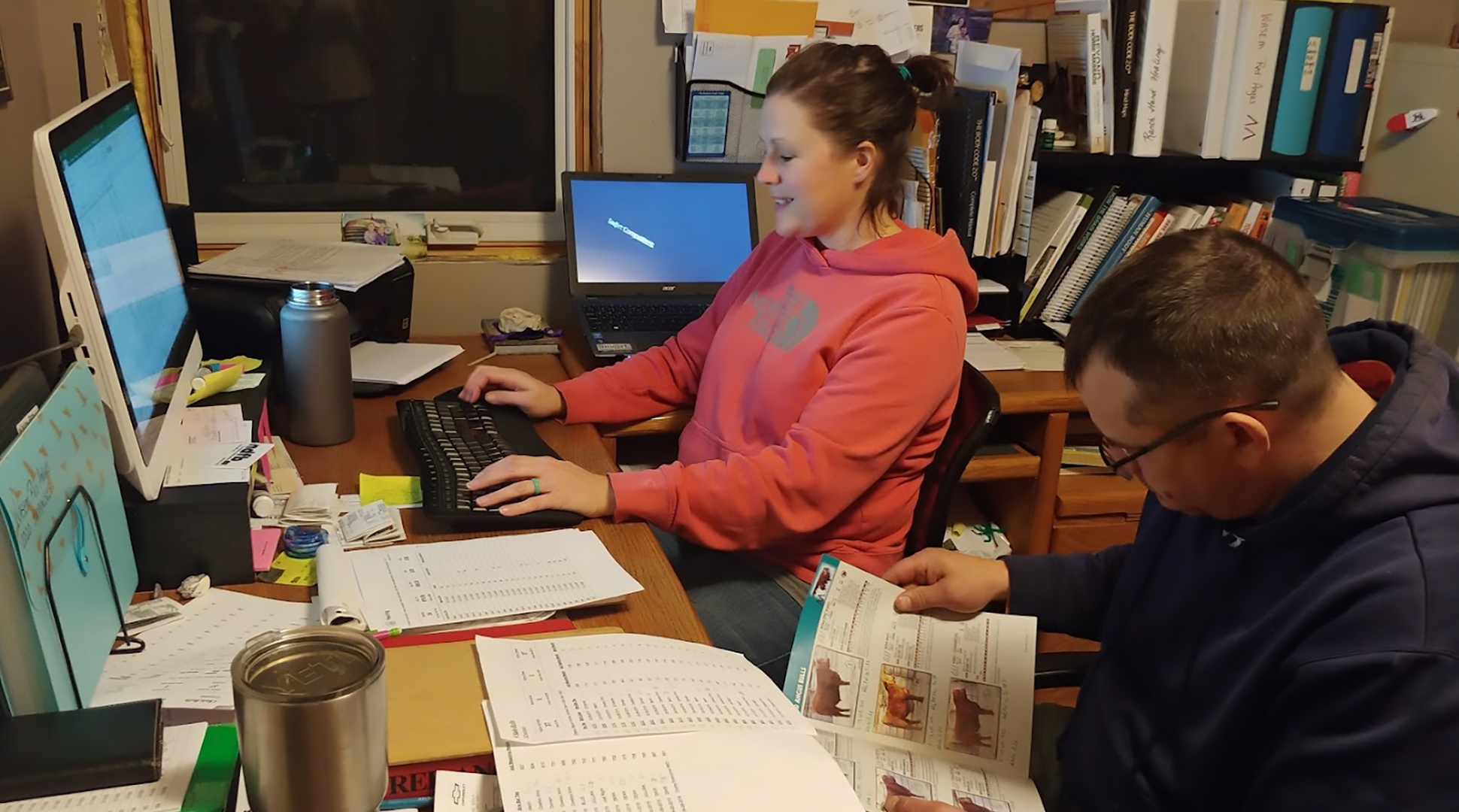photo above of the Wasems managing their records
by Jolyn Wasem
When most people think about ranchers and cattle, they might picture cows munching on grass, with a guy in bibs and a border collie dog looking after them. It’s easy to have preconceived ideas about many things, but many ranchers are quite different than this idealistic picture.

Have you ever pictured a rancher sitting behind a computer with a pile of papers, entering cattle records into the computer, or standing in the pasture with a cell phone, pulling up data on a calf? Why am I talking about this and how does any of this matter to you as a consumer? Let me shed some light…
I am a seedstock producer, meaning I have registered cows with papers, just like if you would if you had an AKC registered dog. I raise bulls to sell to cow-calf producers, who raise cattle to make beef. When my husband and I got into the registered business, I had no idea how many hours I would end up behind a computer doing recordkeeping, but it is a lot.

EID tags (the white circles in the middle of the photo) are devices used to track and identify cattle electronically. Each tag is specific to each animal and gives the rancher specific information about the health, location and breeding status of that animal.
Why do records matter? We keep detailed records on things like birth weights, weaning weights, and vaccinations, as well as herd health records if any animals need to be treated for illness or injury.
We also use genetic testing in our herd. This is done by taking a small tissue sample from the animal’s ear and sending it to the lab to analyze it. This genetic sample proves parenthood and gives us a lot of data that helps us make the best decisions for our herd. The information can help us select animals that are more efficient and have better carcass qualities, which in turn helps you, the consumer, have a better steak!
Efficiency is crucial for us as cattle producers. We need animals that will produce more pounds of beef with fewer inputs. Keeping track of weaning weights helps us to know which cows are doing a good job as mammas, growing the best calves. If she brings home a little one at weaning time, she isn’t doing a very good job and will probably be culled or cut from our herd.
We also keep track of how many cows are in a pasture for how long. This helps us monitor our pastures for production and ensure we have adequate grass the next year. Proper grazing creates a better ecosystem for many different kinds of wildlife.

Gone are the days of just raising cattle. Record keeping is a must, and can look different for each ranch. Some may use spreadsheets, calving books or database systems. We all produce pounds of beef in various ways, which is one thing I love the most about what we do. Having conversations with different cattle producers is fun because you can learn so much from each other.
The next time you are in the store, looking at a package of beef, think about how many hours of record-keeping and data tracking go into that piece of meat for you to enjoy. All of us sitting behind the computer, thank you and encourage you to eat beef, “It’s what’s for dinner.”
Jolyn and her family ranch in western North Dakota. She is also the District 9 representative on the NDFB Promotion and Education Committee.
